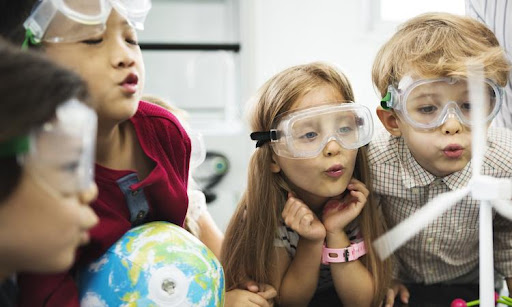A baby starts learning from the day they are born. As they grow, they particularly discern the concept of cause and effect: that taking a specific action will often have a specific consequence.
For example, your child might have watched as you gave them their spoon back after they had thrown it onto the floor. However, you shouldn’t just leave this kind of learning to chance. So, how could you enhance your growing kids’ knowledge of cause and effect?
Blow bubbles
As you use a bubble-blowing kit, your child could gasp in awe. To them, a bubble forming will look magical. Once you have shown your child how you achieve that effect, you could hand them the wand that came with the kit so that they could try blowing bubbles themselves.
You could also follow Hello Motherhood’s advice of experimenting with wands of various sizes and shapes, and encourage your child to chase and pop bubbles either of you create.
Let your child run riot with building blocks
When your little one builds a tall tower from their building blocks before sending that tower crashing to the ground, they aren’t necessarily planning for an adulthood of repeatedly redeveloping a town centre. Rather, they are just learning about cause and effect.
So, don’t be afraid to let them build the tallest tower they can manage. That way, they can find out for themselves what happens when they start adding too much to the tower’s height.
Take your kids to a park where they can play
Your kids can do lots of things at a park – and learn a lot about cause and effect in the process. For example, they can learn that, the harder they push a swing, the higher it tends to get – and that they can often slide down a steep slide more quickly than a narrow one.
Also, a child playing on a balance beam can decipher that they must place their feet carefully – a task requiring steady concentration – if they want to avoid falling off the beam.
Roll, push and pull toys with your child
By rolling a ball back and forth, you can show your kid how pushing the ball harder makes it roll faster. Meanwhile, letting toy cars and trucks go down ramps of various slopes demonstrates that, the steeper a slope, the quicker those toy vehicles will travel down it.
Naturally, if your child wants to take a wheeled toy with them to a certain part of the house, they can just pull that toy – as, again, you could teach.
Give your child an electric toy vehicle
Yes, they do exist – and you could order one from the wide range of ride-on cars available online. Using one of these toys can help a child to develop their spatial intelligence, as many child development psychologists mentioned by BornCute believe.
The term “spatial intelligence” here refers to the child’s understanding of not only space but alsoobjects contained within – like physical obstacles for the child to dodge when driving their vehicle.
















